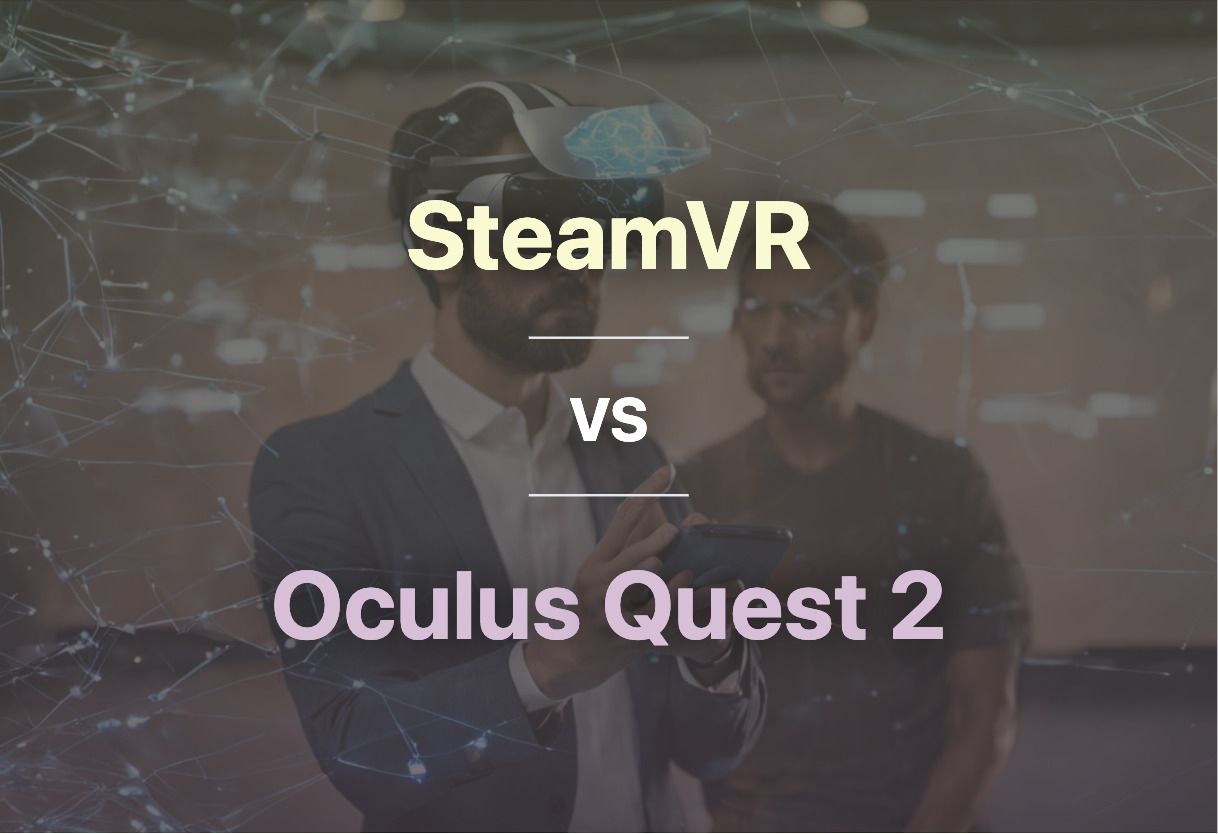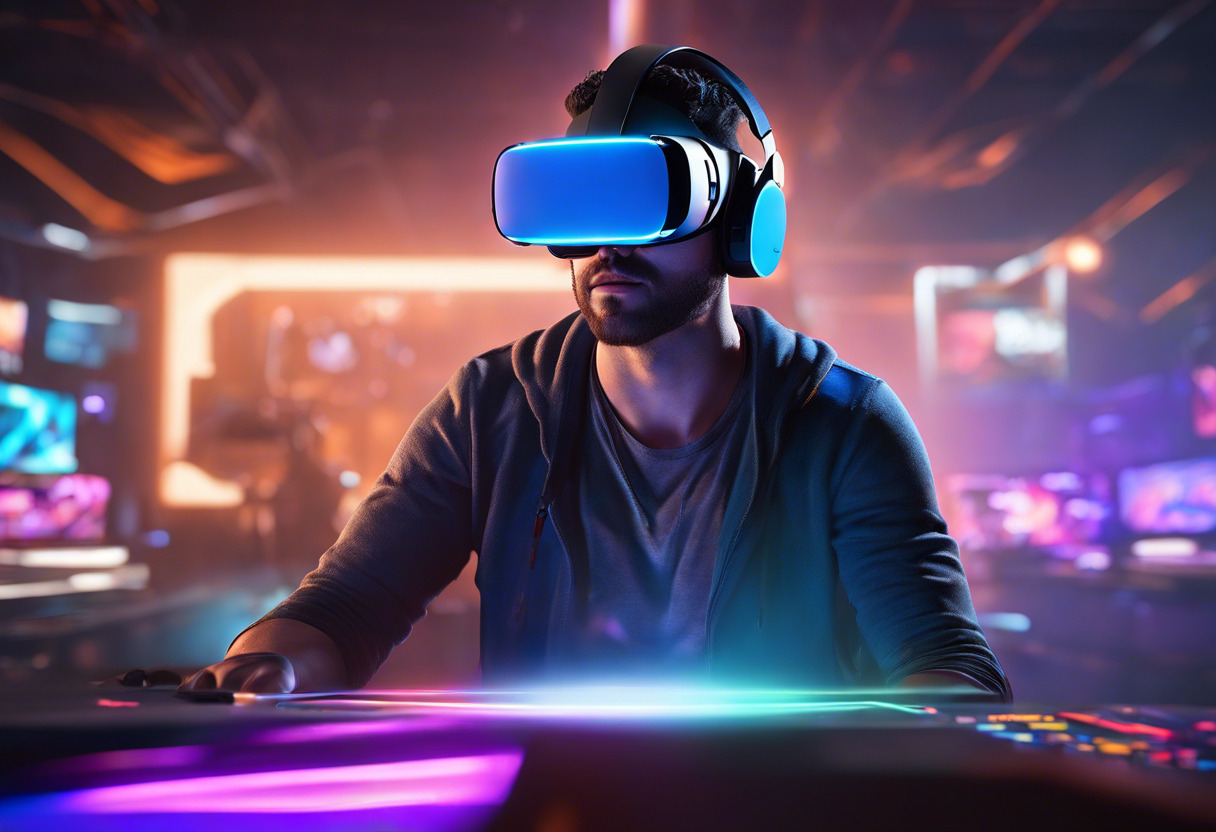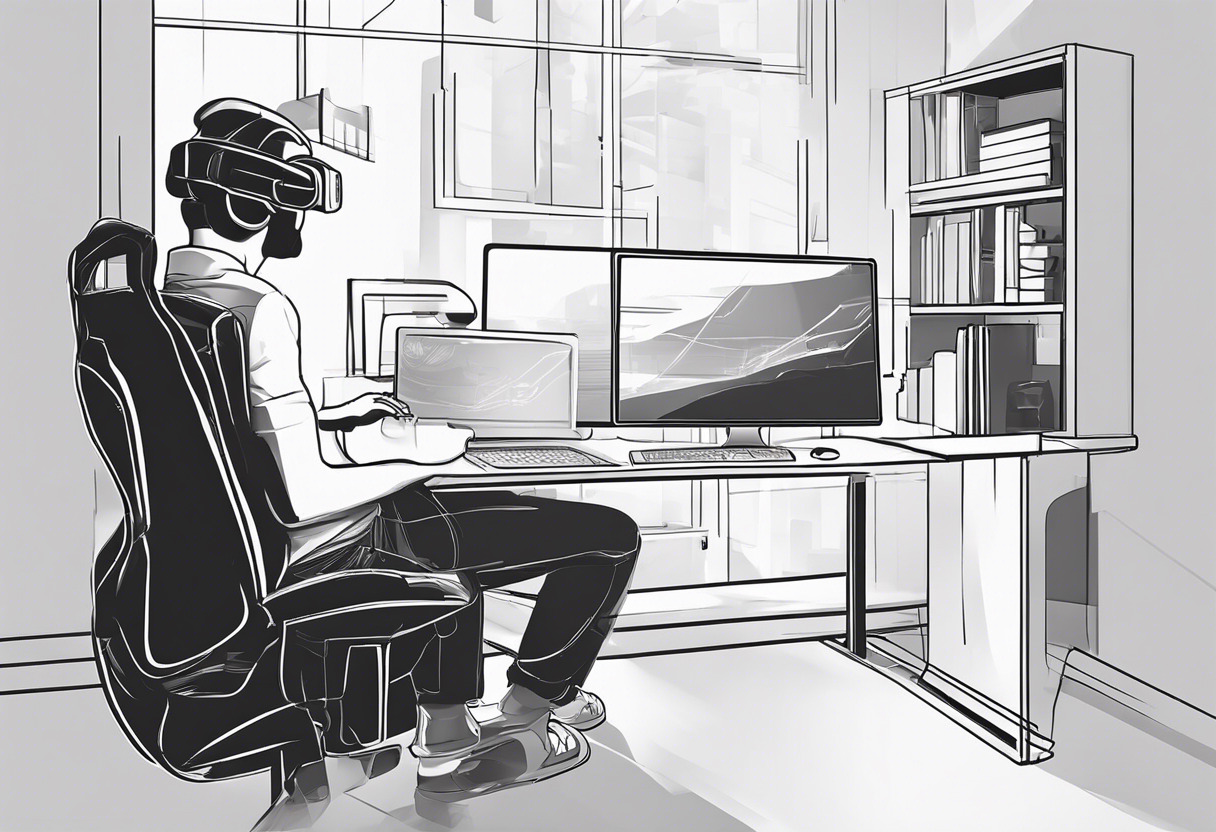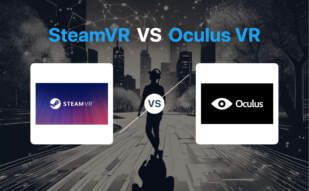When deliberating between SteamVR and Oculus Quest 2, the choice boils down to your specific usage. For PC-dependent, full-room experiences with extended device compatibility, choose SteamVR. For standalone, user-friendly VR with high-resolution display and long-term support, opt for the Oculus Quest 2.

Key Differences Between SteamVR and Oculus Quest 2
- Usage: SteamVR caters to comprehensive PC-based VR experiences. Oculus Quest 2 offers standalone functionality.
- Display: Oculus Quest 2 outrivals with a high-resolution display of 1832×1920 per eye.
- Device Compatibility: SteamVR supports various HMDs, including Vive and Rift. Oculus Quest 2 operates on its unique ecosystem.
- Support: Regular software updates and long-term commitment set Oculus Quest 2 apart.
| Comparison | SteamVR | Oculus Quest 2 |
|---|---|---|
| Operating Basis | Dependent on PC | Stand-alone basis, with PC-tethered VR capability |
| Main Features | Room setup, device management, in-app purchasing, 3D environments creation | High-resolution display, Refresh rate up to 120 Hz, Snapdragon power, Sharp virtual gaming details |
| Compatibility | Compatible with Vive, Rift among others | Compatible with over 500 VR games, apps, and experiences |
| Head-Mounted Displays (HMD) | HTC Vive or VCV1 | Oculus Quest 2 developed by Meta Platforms |
| Additional Accessories | Base stations, Input devices like Controllers, CyberShoes, Cyberchair, Cybercarpet | ‘Elite Strap’, Logitech headphones, K830 keyboard from Logitech |
| System Requirements | OS: Windows 7 SP1, Windows 8.1, Windows 10, Processor: Intel Core i5-4590/AMD FX 8350 equivalent, Graphics: NVIDIA GeForce GTX 970, AMD Radeon R9 290 equivalent | System on a chip: Qualcomm Snapdragon XR2, Increased RAM: 2GB to 6GB LPDDR4X, Storage variations: 64GB, 128 GB, 256 GB |
| Additional Functionality | Supports creation of overlay applications | Dynamic controllers, hand tracking, augmented reality, voice command enabled, mixed reality casting |
What Is SteamVR and Who’s It For?
SteamVR, developed by Valve, serves as a comprehensive runtime platform that provides virtual reality experiences. It is automatically installed with the Steam client when a VR headset is connected to a PC. SteamVR is intended for immersive gameplay aficionados, high-fidelity content development experts, and virtual reality enthusiasts seeking premium features such as room setup for defining the play area, device management, and a 360-degree full room VR experience.

Pros of SteamVR
- Supports comprehensive 360-degree full room VR experience
- Integrates with the Steam client for in-app purchases
- Supports wide-ranging HMDs including Vive and Rift
- Unique features such as SteamVR Home and SteamVR Collectibles
- Inclusion of Accessories for positional tracking
Cons of SteamVR
- System requirements may be steep for average users
- Compatibility issues reported with Meta Quest 3
- Requires significant PC power for optimal performance
What Is Oculus Quest 2 and Who’s It For?
Oculus Quest 2, developed by Meta Platforms, is a breakthrough VR headset that operates standalone or with PC-tethered VR capability. Its features include the highest-resolution singular display, powered by next-gen Snapdragon by Qualcomm. The Oculus Quest 2 caters to VR enthusiasts craving seamless immersion and sharp, detailed visuals. Moreover, it appeals to both casual gamers and VR professionals with its enhanced Oculus Touch controllers and a head-tracking and controller supported software suite.

Pros of Oculus Quest 2
- High-resolution display with fast-switch LCD panel
- Powered by the next-gen Snapdragon for crisp details
- Offers standalone or PC-tethered VR capability
- Features improved Oculus Touch controllers
- Supports a library of over 500 VR games, apps, and experiences
Cons of Oculus Quest 2
- Not backward-compatible with Oculus Go apps and games
- Higher-end storage options can be costly
- Experimental features may not be fully refined yet
SteamVR or Oculus Quest 2: Your Finest Choice?
Struggling to decipher which VR environment is your perfect fit between SteamVR and Oculus Quest 2? Let’s espouse on the benefits each technology offers to different audience segments.
Developers and Game Makers
SteamVR may be your preferred option. Renowned for its full-room VR experience, its extensive support for Windows 10 gaming VR experiences, and compatibility with multiple HMDs. Overlay applications allow for additional functionality. For those with an innovative edge, SteamVR’s software facilitates creation of 3D environments.

VR Enthusiasts With Rigorous Interest in Hardware
If hardware specifics pique your interest, the Oculus Quest 2 stands tall. Providing highest resolution display capabilities, combined with its ultralight design and superior Snapdragon processor, each feature serves to augment your VR experience. Future headsets like Meta Quest 3 promise even more refined VR experiences.

Immersive Users Who Value Connectivity and Longevity
SteamVR’s device management aids firmware updates and device pairing. CyberShoes enhance immersion in VR, while supporting cross-platform use. Long-term investment in your VR journey aligns ideally with SteamVR’s deep-rooted history.

Those attuned to advanced technologies such as hand tracking, dynamic controllers, and proactive software updates might prefer the Oculus Quest 2.

The verdict lies in your preferences: if overlay applications, comprehensive VR experiences, and support for Windows 10 gaming VR intrigue you, SteamVR reigns superior. For exceptional hardware, dynamic controls, and regular software updates, the Oculus Quest 2 is your VR champion.
Tiffany Brise
Content writer @ Aircada, patiently awaiting a consumer AR headset that doesn’t suck.





